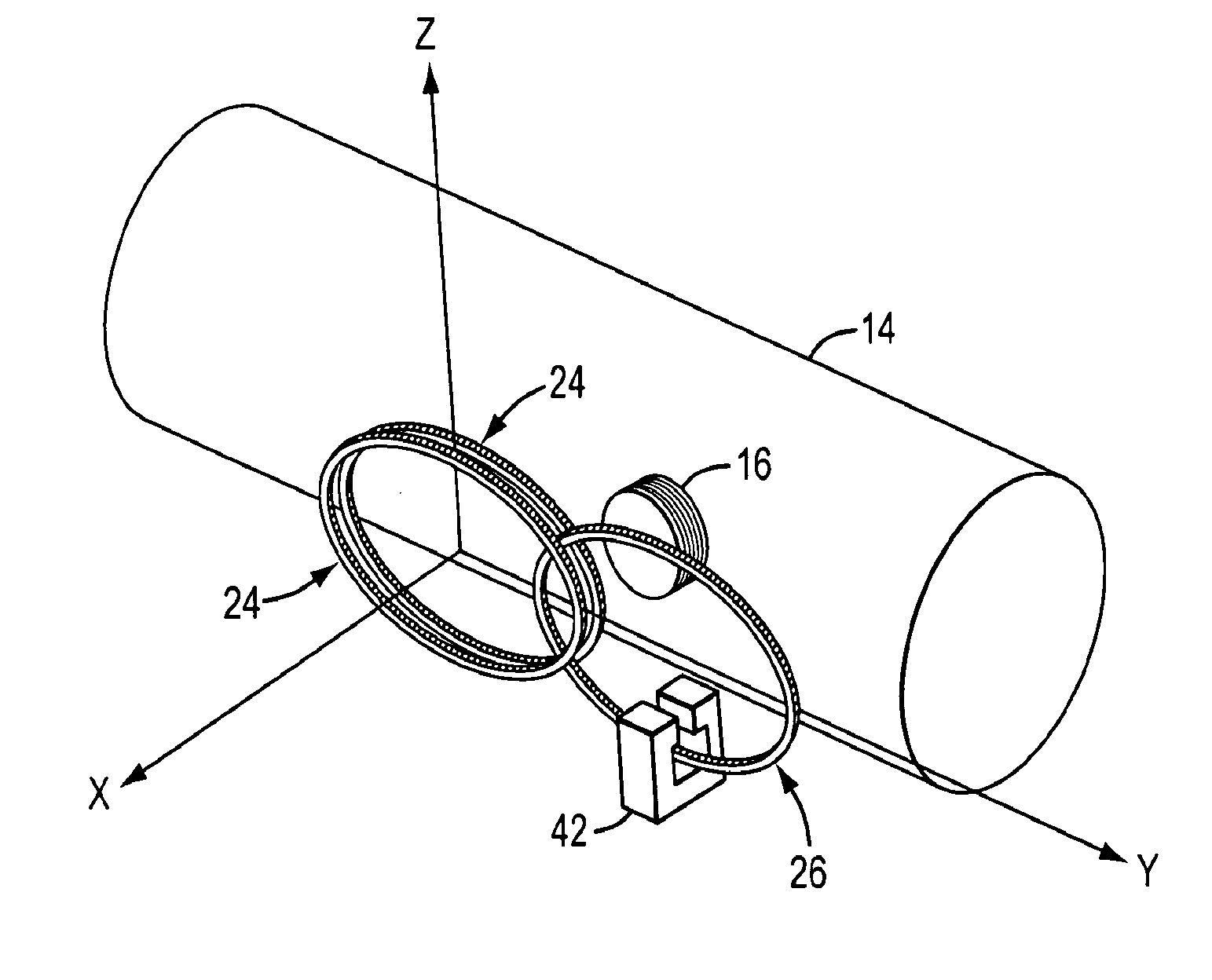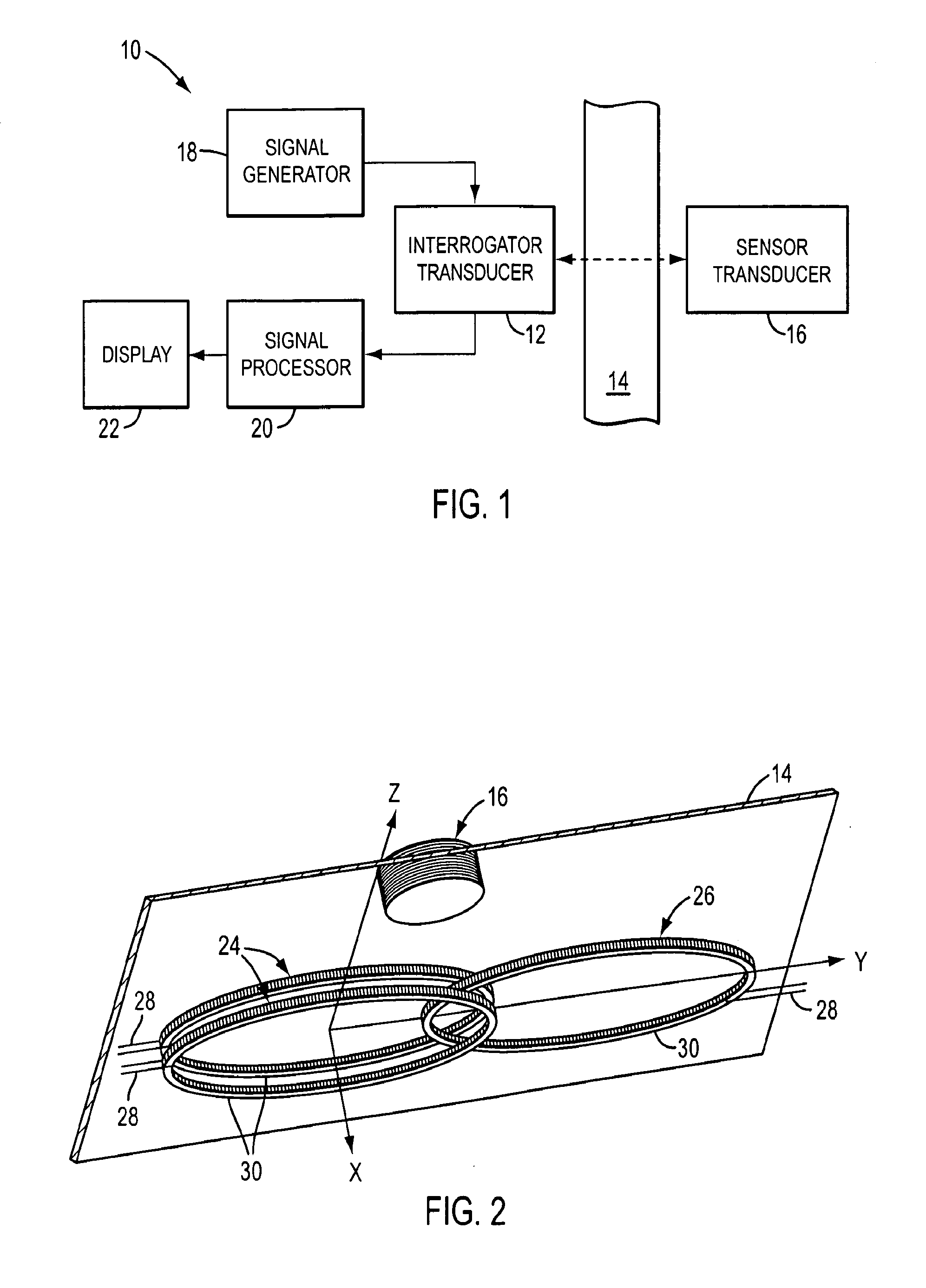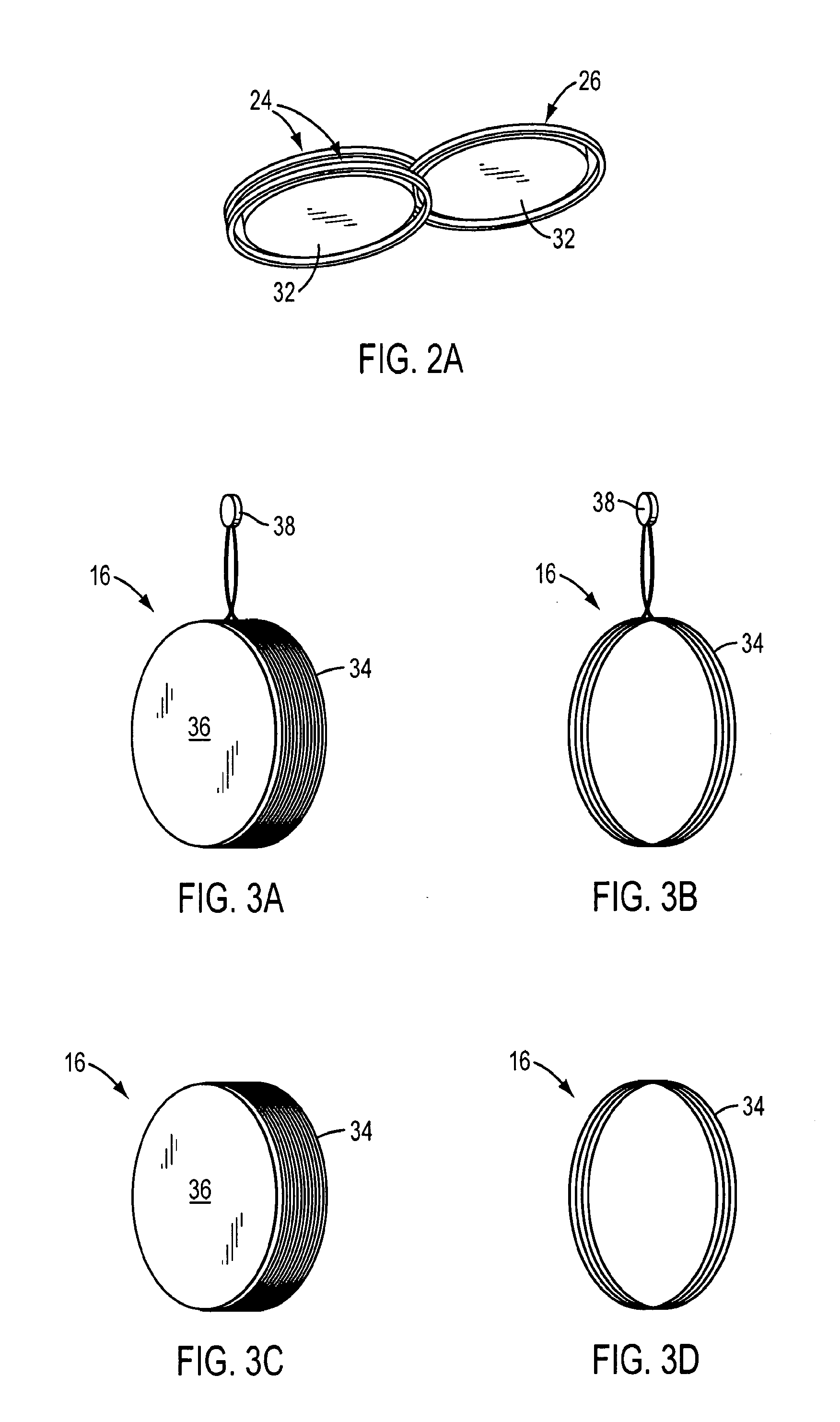Inductively interrogated passive sensor apparatus
a passive sensor and inductive interrogation technology, applied in the direction of magnetic sensor geometrical arrangement, instruments, material magnetic variables, etc., can solve the problems of undesirable structure breaching, inability to use active electrical components in certain environments, and difficulty in achieving the effect of reducing the number of active electrical components
- Summary
- Abstract
- Description
- Claims
- Application Information
AI Technical Summary
Benefits of technology
Problems solved by technology
Method used
Image
Examples
Embodiment Construction
[0034]A block diagram of an illustrative embodiment of the sensor apparatus of the present invention is shown in FIG. 1. The sensor apparatus of this embodiment, which is indicated generally by reference number 10, comprises a magnetic interrogator transducer 12 which in use is positioned on one side of a barrier 14, and a magnetic sensor transducer 16 which in use is positioned on the opposite side of the barrier and is magnetically coupled to the interrogator transducer. In this embodiment of the invention, a preferably very low frequency (VLF) AC signal from a signal generator 18 is applied to the interrogator transducer 12, which in response thereto generates a time-varying magnetic field that propagates back through the barrier 14 and is impressed on the sensor transducer 16.
[0035]As will be described more fully below, the magnetic field generated by the interrogator transducer 12 induces the sensor transducer 16 to generate its own time-varying magnetic field. This magnetic fi...
PUM
 Login to View More
Login to View More Abstract
Description
Claims
Application Information
 Login to View More
Login to View More - R&D
- Intellectual Property
- Life Sciences
- Materials
- Tech Scout
- Unparalleled Data Quality
- Higher Quality Content
- 60% Fewer Hallucinations
Browse by: Latest US Patents, China's latest patents, Technical Efficacy Thesaurus, Application Domain, Technology Topic, Popular Technical Reports.
© 2025 PatSnap. All rights reserved.Legal|Privacy policy|Modern Slavery Act Transparency Statement|Sitemap|About US| Contact US: help@patsnap.com



